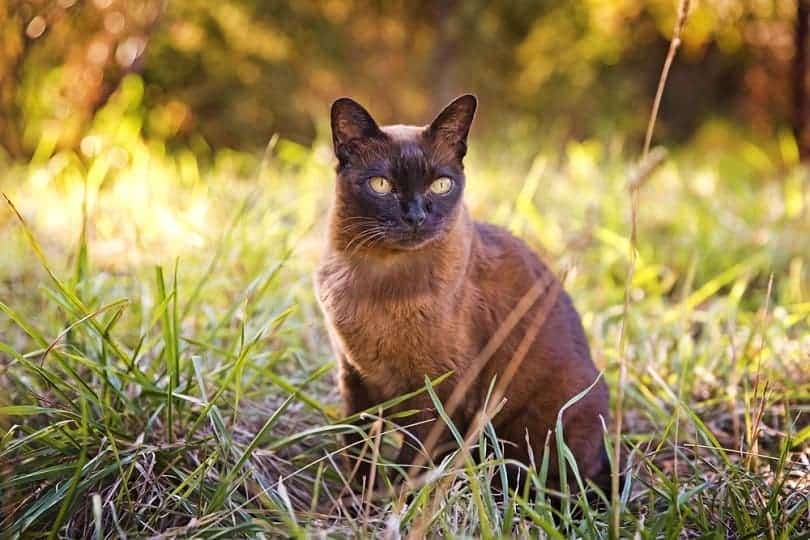If you get itchy eyes every time you enter a house with cats, a hypoallergenic cat might sound like a miracle. After all, cat allergies are very common, and many allergic people still love cats at a distance. Lots of breeds have been advertised as hypoallergenic, including the Burmese. But are hypoallergenic cats a myth?
The truth is somewhere in between. If you have mild cat allergies, Burmese cats might be an option that will help you manage them. But no cat is 100% allergen-free. Understanding the science behind cat allergies will help you figure out why Burmese cats might help some people with allergies, but they aren’t a magic bullet.
Allergies and Cat Proteins
If you’re allergic to cats, you’re probably allergic to something very specific—the Fel D1 protein. This protein is found in a cat’s bodily fluids, including saliva. Although we don’t know all the reasons it is there, it does cause allergies in some people.
Because it’s one specific protein that causes allergic reactions, the “allergy level” varies from cat to cat. Although there aren’t large-scale studies comparing breeds, there is evidence that some cats have much less Fel D1 than others, and Burmese cats might tend to produce small amounts of this protein. That’s one possible reason why these cats have a reputation for being hypoallergenic. If you have a mild allergy and your cat only produces half the protein that an average cat does, you might not notice any reaction.
The Link Between Shedding and Attacks
Most of the time, we hear about people being allergic to cat fur or shedding, not saliva. That’s because cats groom themselves, spreading that protein all over their fur and skin. Depending on your allergy type, you might have an asthma-type reaction or another type of allergic reaction when your body comes in contact with it. From there, you might get the protein on your hands when you pet a cat, or you might breathe in skin flakes (dander) and shed fur.
Since shedding is one of the main ways that Fel D1 gets into the air, if your cat sheds less, you might not have as strong of an allergic reaction. And that’s good news for Burmese. Unlike protein production, it’s easy to measure shedding. And Burmese cats are relatively low-shedding cats. They have short fur and only rarely shed, especially if they are groomed often. This means that if you mostly react to dander and fur in the air, you’ll likely have a good reaction to being around Burmese cats.

So, Are Burmese Cats Hypoallergenic?
These two factors help us see why allergies aren’t so cut and dry. In the strictest sense, there’s no such thing as a hypoallergenic cat. All cats produce some amount of Fel D1, including Burmese. But Burmese cats definitely shed less than most cats, so there is less Fel D1 in the air around them. They also might produce lower levels of the protein in general. These two factors would make allergic reactions less common and less severe.
Final Thoughts
In the end, allergens depend on the person. If you are considering a Burmese because of the allergy resistance, try to meet your breeder before you commit to anything. That will give you a good idea of whether you are likely to react to Burmese cats. Other actions—like washing your hands after petting, grooming regularly, and keeping your cat indoors—can also help reduce allergies. By combining these, you’re likely to get as close as you can get to an allergy-free relationship with your cat.
Featured Image Credit: Seregraff, Shutterstock














